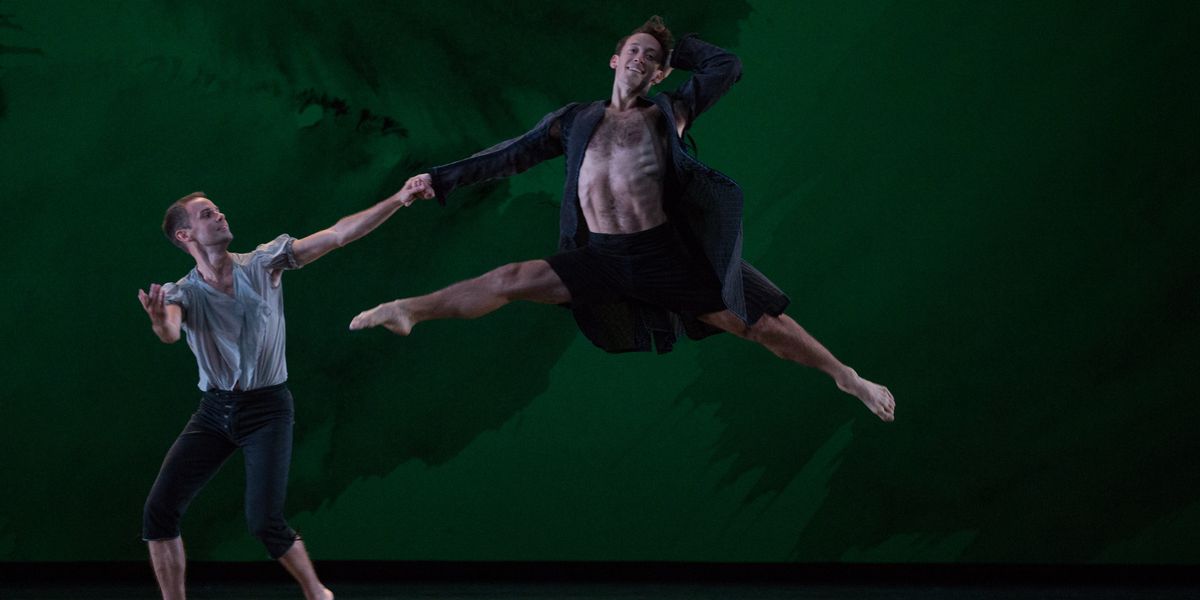The Dos and Don'ts of Becoming a More Musical Dancer
You know compelling musicality when you see it. But how do you cultivate it? It’s not as elusive as it might seem. Musicality, like any facet of dance, can be developed and honed over time—with dedicated, detailed practice. At its most fundamental, it’s “respect for the music, that this is your partner,” says Kate Linsley, academy principal of the School of Nashville Ballet.
“Musicality is an interpretation of a score that catches the eye,” says Linsley. “Yes, it’s executing things on the right note and with the right accent, but if a dancer feels what the music is and shows how their body interprets that, that’s the first thing you notice.”
For Rhapsody James, street jazz teacher at Broadway Dance Center in New York City, it’s about a dancer’s ability to dissect a rhythm. But she also appreciates unexpected interpretations. “A dancer who can manipulate the music—that’s what I look for,” she says.
Do: Listen to the music—over and over again.
“Before I even choreograph, I’m listening to the song as much as I can,” says James. “I want to absorb every piece of the music and vocals, so I can translate it.” That doesn’t mean you should just play the music in the background. “Don’t put it on when you’re doing the dishes,” says Aaron Loux, a dancer with the Mark Morris Dance Group. “Sit down, and let the music be your focus. Try to open your sense of awareness to sound.”

Rosalie O’Connor, Courtesy Mark Morris Dance Group
Don’t: Let your own history with the music influence you.
“If I’m doing a song in class that everybody knows, I can feel the room go, ‘Oh, that’s my song,’ ” says James. “People start dancing the way they want to and stop listening to what I’m telling them to do.” Exercise restraint instead. Otherwise, you might rush, or just fall to a flatline beat that you want to hear, she says.
Do: Find a role model.
“Find someone in class who you think has wonderful musicality and rhythm,” says Loux. “Go across the floor with them, dance with them—make it a project to take on their timing.”
Don’t: Over-rely on the counts.
“Sometimes you need to do it,” says Loux, “but the music doesn’t exist in the counts.” In MMDG, the company often sings the melody to figure out how a movement phrase fits. “Once you can sing it, you’re much closer to being able to do it,” says Loux. Linsley agrees: “You might hear something as a 10-count phrase, and someone else hears 8 and 2,” she says. “Finding your internal song helps you to interpret.”

Karyn Photography, Courtesy Nashville Ballet
Do: Research the score.
“Do the intellectual work,” says Linsley. “Who’s the composer? In Swan Lake and Sleeping Beauty, which are classical ballets, the accent is down, and feels heavier. But Who Cares? is a neoclassical work, so the accent is up.” What’s the time signature of the music? Does it have a specific musical form—a waltz, polka, rondo, sonata, minuet?
Don’t: Forget about the in-between moments.
Ignoring the space between counts could lead to a monotonous quality in your dancing, says Linsley. “You have to understand that the plié or allongé or your breath or the movement of your eyes all help to fill out the music.”
Do: Practice dancing in silence.
“If you don’t have music to drive you, how can you dance?” says Loux. Finding out what your inherent sense of phrasing is, absent of any influence, might allow you to access rhythm in a new way, he says.

Richard Termine, Courtesy Mark Morris Dance Group
Don’t: Think about musicality last.
“People have the impression that musicality is something you can add on later,” says Loux, “and I think it’s the opposite. You have to start by listening to the music and attending to the rhythm and work it out from there.”
Do: Tap into the musicality of fellow performers.
When you’re performing in an ensemble, get in sync with how others are interpreting the music. “You have to physically look around,” says Loux. “See the space you’re in. You can’t just look at the audience and hope you’re doing it right—and that everyone else is, too.”




